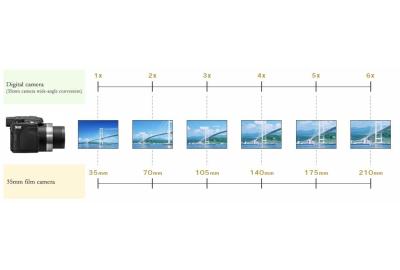Focal length is a measure of the magnification of a lens, and it is an important factor to consider when shooting a video. A lens with a short focal length, such as a wide-angle lens, will capture a wide field of view and is often used for landscape or architectural shots. On the other hand, a lens with a long focal length, such as a telephoto lens, will capture a narrow field of view and is often used for portraits or wildlife shots.
When shooting a video, the focal length of the lens can have a big impact on the look and feel of the final product. A wide-angle lens will make a room or landscape appear larger and more expansive, while a telephoto lens will make the same scene appear more compressed and intimate. The choice of focal length also affects the perception of depth in a scene. A wide-angle lens will create a sense of depth by showing more of the foreground and background, while a telephoto lens will compress the depth and make the background appear closer to the foreground.
Another important factor to consider when choosing a focal length for a video is the effect it has on the movement of the camera. A wide-angle lens allows for more freedom of movement and can be used to capture sweeping, panoramic shots. A telephoto lens, on the other hand, is often used for static shots or shots that require precise framing.
There are several types of camera lenses with different focal lengths that are commonly used in video production.
- Wide-angle lenses have a short focal length, typically between 8mm and 35mm. These lenses capture a wide field of view, making them ideal for landscape and architectural shots, as well as for scenes in which you want to show a lot of background and foreground. They also allow for more freedom of movement, making them suitable for capturing sweeping, panoramic shots. However, wide-angle lenses can cause distortion, especially when used at close distances.
- Standard lenses have a medium focal length, typically between 35mm and 85mm. These lenses capture a field of view that is similar to what the human eye sees, making them ideal for general-purpose use. They are often used for interviews, talking-head shots, and other scenes in which you want to show a natural-looking perspective.
- Telephoto lenses have a long focal length, typically between 85mm and 300mm. These lenses capture a narrow field of view, making them ideal for portraits and wildlife shots, as well as for scenes in which you want to zoom in on a specific subject. They also compress the depth of a scene, making the background appear closer to the foreground. However, telephoto lenses require a tripod or other support to keep them steady.
- Zoom lenses have a variable focal length and allow you to adjust the field of view without changing lenses. They are useful in situations where you need to quickly change the focal length or when you want to capture a wide range of angles. Zoom lenses are typically less sharp than prime lenses, which have a fixed focal length.
- Macro lenses are specialized lenses that are designed for close-up photography, they have a short focal length and allow you to capture detailed images of small objects.
In conclusion, the focal length is a critical aspect of lens choice that affects the final look and feel of a video. Wide-angle lenses are often used for landscape and architectural shots, while telephoto lenses are often used for portraits and wildlife shots. The focal length also affects the perception of depth and the freedom of movement of the camera. The decision should be based on the story you want to tell and the visual style of your project.





